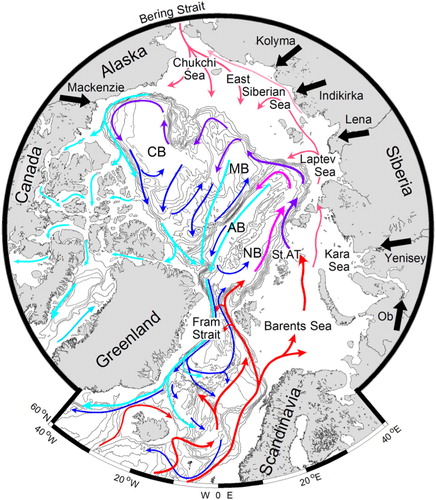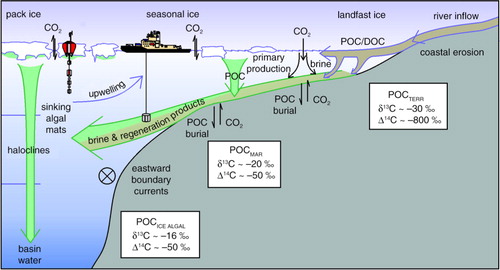Figures & data
Fig. 1 Dominating Arctic Ocean currents with inflowing relative warms surface currents (red) and colder surface currents (light blue) together with intermediate and deep currents (burgundy and dark blue). Features of the Arctic Ocean are abbreviated as follows: Canadian Basin (CB), Makarov Basin (MB), Amundsen Basin (AB), Nansen Basin (NB) and St. Anna Trough (St.AT).

Fig. 2 Carbon transformation by marine primary production followed by sedimentation and microbial decay. In the shelf seas, much of the latter occurs at the sediment surface where brine-enriched water transport the decay products to the deep central basins. Particulate organic carbon is abbreviated to POC.

Fig. 3 Carbon transformation in shelf seas with substantial terrestrial organic carbon input. Composition estimates based on Goñi et al. (Citation2005) and Stein & Macdonald (Citation2004). Particulate organic carbon and dissolved organic carbon are abbreviated to POC and DOC, respectively.

Fig. 4 Map with suggested transects for the study of the Arctic Ocean carbon system: red for following the land, burgundy for studying the boundary current contribution and blue for the central basins. Illustrated are the sea-ice conditions at the minimum in September 2012 (white shading) and with maximum in March 2012 demarcated by the black lines.

